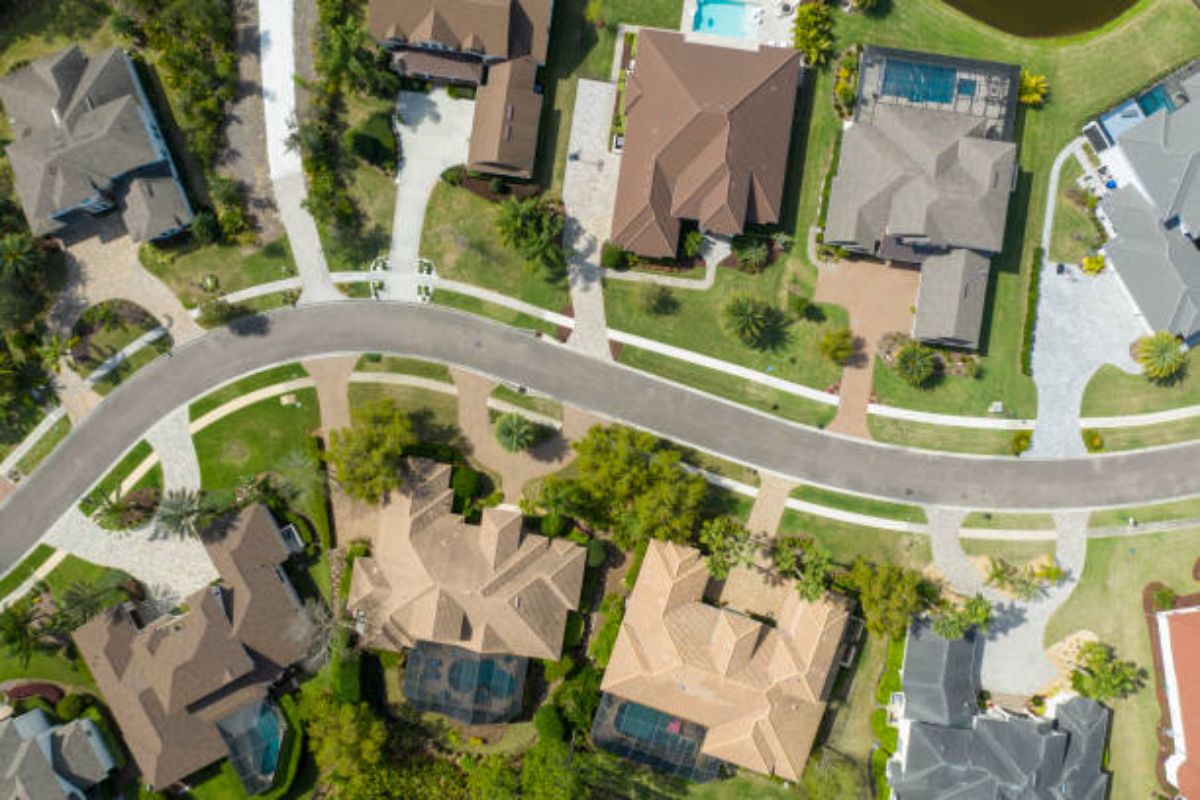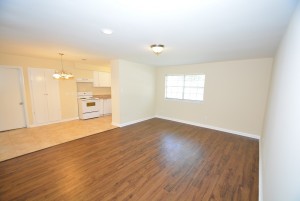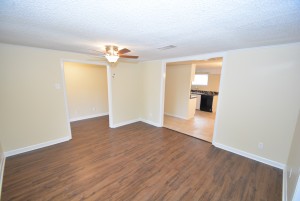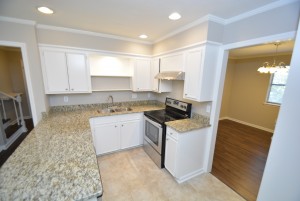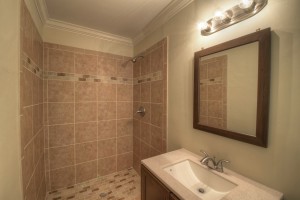The Memphis & Little Rock Turnkey model, and our personal investment philosophy road map to successful cash flow real estate investing, is summed up as buying the Right Property in the Right Market with the Right Property Manager. This is the first in a three-part blog series discussing this road map. This blog addresses the Right Property.
Buying the “Right Property” is purchasing a home in areas where tenants want to live, following an all-inclusive rehab that best positions your home for consistent cash flow. Too frequently, investors are driven strictly by numbers on a deal and not by the area or condition of the home. This is a huge mistake if your goal is to buy and hold for long-term cash flow. Real estate is no different than any other business model where you have to position yourself on the front end for long-term success. Currently, I am seeing a lot of investors who bought into the zero-down cash-out days from 2006 to 2010 wanting to sell because they are drowning in maintenance costs. This was a strategy wherein investors could use equity in lieu of a down payment to purchase rental homes. The problem was that the scope of renovations on the home being purchased was limited to the amount at which one needed to be “all in” to make the $0 down/cash-out work. The investors that succeeded in the zero-down days did so because they set aside the “cash out” on the refinance for future repairs down the line. Those who did not put the cash-out funds aside are the ones mentioned above who are not succeeding or have already exited the investment, likely at a loss.
I am starting to see this happen again as home values start to rise and investors are implementing the BRRRR strategy (Buy, Rehab, Rent, Refinance and Rehab). This can be a good strategy, but in most cases, I am seeing investors go into this model with the approach of making the home inhabitable rather than doing the necessary items for long-term success. A rehab that entails paint, carpet and a mop is not going to work in today’s competitive market, in which tenants have choices of better-updated homes wherein they are not routinely calling the Property Management company for maintenance. Cutting corners on the front end will certainly lead to cash flow problems down the road, and I expect these investors to be back on the market looking to sell in 5 to 7 years.
We have discussed some problems that can occur with the wrong house; let’s dig into what it means to buy the right house. The goal of the “Right Property” is to not only select homes in areas where tenants want to live, but to renovate the properties on the front end so that our investors enjoy consistent cash flow through reduced maintenance and shorter periods of vacancy. This is accomplished by adding upgrades that are not only superior-quality and more durable, but also add value and look great so that potential tenants will choose the home over our competition.
The turnkey model we have implemented is simply an extension of our own personal investment philosophy that has developed and evolved over the years through first-hand experience. Let’s dive into the details.
Area
We see the highest level of success for single-family homes in prime rent residential areas. Buying homes in areas where tenants want to live, not have to live, is very important to the long-term success of your property. While lower-income areas are abundant in most large metropolitan areas and the need for this type of housing will always be present, this does not mean it is a profitable purchase, especially for an out-of-state owner where even with a strong property manager, the investment tends to be more hands-on as more decisions requiring owner approval are needed.
Today, arguably more than in previous generations, saving money and investing for the future requires a career path with progressively increasing responsibility and compensation, beyond just annual raises to keep up with inflation. When residents are employed in a career where upward mobility is possible, we typically observe higher credit scores, higher rates of home ownership, and increased pride of ownership or residence within their neighborhood. If they rent, these tenants choose well-maintained homes where they need not depend on the landlord for frequent fixes and maintenance issues. When tenants lack the opportunity for growth within their current employment, they are more likely to switch jobs, or possibly be forced to switch jobs. If they have not been able to build reserves of savings, in the event of unexpected expenses or unemployment, it can be hard to maintain a stable living situation. These differences are what separates higher rent areas vs. lower rent areas. It is worth noting, that typically, in the higher rent areas, if a tenant were to lose a job, it seems they have more resources to make the bare minimum of ends meet, such as rent, until they get back on their feet.
While neighborhoods may cycle up or down depending on the market, the economic outlook for lower-income, lower-rent areas is typically not promising. These areas may also have higher crime rates, which can drive away tenants who pay rent reliably and are concerned with providing a stable home for their family. Overall, a lack of investment by a majority of a neighborhood’s population translates to a less traditional residential community.
For instance, 38127 in Memphis (Frayser) tends to be a hot spot for investors. Prior to the mid-1970s, Frayser was doing well economically with several plants and factories operating in the area. However, those operations since closed, causing the area to decline, and it has never recovered economically. When large businesses that drive the neighborhood economy pull out of the area, or commercial development is scarce, this signifies little faith in the long-term economic outlook for the area and will present an issue with sustainable rents and tenant availability over the long term. This is not a good blueprint for a buy-and-hold investment.
Consider residents’ typical desire for dining, shopping and entertainment. In Frayser, other than fast food, there is not much. If you want to take the family to a movie, it is a 20- to 25-minute drive to the closest movie theatre. Even with recent spending initiatives by the city, this area has a long way to go, if ever, before it becomes a sustainable area that provides a promising long-term investment. I always say, you can fix the house, you can fix the Property Manager, but you can’t fix the area.
We want homes in areas where tenants want to live, because they are near their jobs, they feel safe, and they are near amenities that contribute to their quality of life. Based on 97 move-in surveys conducted by our Property Management company in 2016, the #1 reason why people moved into the home they chose was feeling safe, while #2 was the area, i.e. things to do and familiarity with the neighborhood.
In addition to the critical factor of area, effectively positioning a home for consistent cash flow means positioning your home for success on the front end. Through a renovation that addresses the following key items, you can make your property appeal to a prospective tenant over other homes in the area, thus reducing vacancy. Also, by adding select upgrades described below, you can reduce your maintenance and tenant turn costs.
Flooring
One of the key items we use in high-traffic areas is vinyl plank hardwood flooring, which is highly water-resistant. Typically carpet in rental homes has a thinner pad and is barely durable enough to withstand one tenant turn. If your tenant spills anything stainable (art paint, fruit juice, red wine, grease, etc.), even at only one year old, the low-quality carpet is ruined. We only utilize carpet in bedrooms that tend to have less foot traffic and furniture covering a large portion of the space in the room. Even at that, we still use a higher-grade carpet with a thicker pad that will provide a longer lifespan. Vinyl plank flooring is not only more durable, but also looks better and makes rooms look larger. The installation cost may be twice as much as carpet, but the return on investment will be significant, not to mention the first impression made upon the prospective tenant when the leasing agent opens the door.
Adding ceramic tile in the kitchen and bathroom instead of vinyl rolled flooring is another long-term cost saver as it is more durable when laid correctly, and is also more attractive, which again is important for shorter vacancy. Spending a few more dollars on higher-end materials during an initial rehab will also save in future maintenance calls.
Kitchens & Bath
The goal here is to use higher-quality materials to reduce maintenance costs, and at the same time to create a “wow” effect when a tenant enters the home. Updating kitchens would include:
• New countertops
• New cabinets or refurbishing cabinets and adding brushed nickel hardware
• Ceramic tile or vinyl plank flooring
• Updated dishwashers
• Brushed nickel name brand faucets
• New electrical fixtures
• Ceiling fans
Bathroom updates may include ceramic tile, brushed nickel faucets and showerheads, new or refurbished vanities, brushed nickel light fixtures and new mirrors. We also love how some older homes have retro ceramic and broken concrete tile, which has made a comeback. It is not unusual for older homes to have these original materials still in perfect condition, which certainly provides the durability we are looking for to reduce tenant turnover cost.
Exterior Improvements
For prospective tenants driving through the neighborhood, a well-maintained yard with landscaping appeal such as neat hedges, accent shrubs and mulch, along with a professional, well-placed sign, will not only generate a phone call, but will be the home that the prospect remembers most. As vacancy kills cash flow, something as minor as landscaping helps to generate a high number of leads.
Painting the home’s exterior not only improves curb appeal but also helps to reduce maintenance, as painting the outside entails replacing rotten exterior siding and soffits. Ignoring rotten wood upfront is a cost-cutting measure I see many investors make that can subsequently turn into a very large expense within the first three years of ownership. Rotten wood does not show well as a tenant walks the exterior of a home they are considering.
Many investors also exclude key exterior items that need to be addressed such as damaged fences, external buildings and overgrown tree limbs that pose a danger to the home’s roof. Local landlord laws in many jurisdictions require the landlord to be responsible for all items on the lot of their home, which would include those three items.
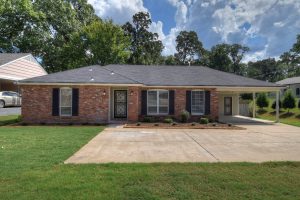
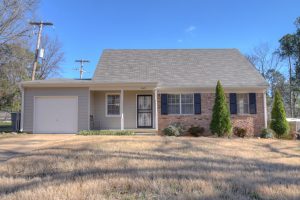
Roof & HVAC
These are referred to as CAPEX items as they are large in nature and can kill cash flow for long periods of time. On the front end, we replace certain items even if they work, but do so because they are at a point where they could go out in the first 7 to 10 years, thus eliminating several months of cash flow. This is especially true for investors using conventional financing.
At a recent property tour we hosted in Little Rock, AR, an individual asked why we were selling our home for $80,000, which was $10,000 more than several other investor comps in the area. That is a fair question, especially by a new investor who has never purchased before, and one we embraced as our reasoning truly solidifies our business model of providing cash flow real estate.
Prior to our rehab, the home had a 20-year-old HVAC system that worked fine and looked to be well-maintained, along with a roof that we thought was about 15 years old. Buying that home as is, with the old systems in place, would warrant certain replacement in 5 to 7 years. On a home that grosses $350 a month in cash flow, replacing those items will cost $10,000; if those replacements occur within a few years of each other, then you are essentially looking at $0 cash flow during that time. In this scenario, it would take 28 months with no vacancy or any other maintenance just to catch up.
Depending on your portfolio size, if you have multiple homes that have several thousand in deferred major capital expenses in the first few years of ownership, that could cause a huge financial strain of out-of-pocket expenses, which is what we are now seeing with the zero-down investors who are looking to sell. The problem is that these investors see comparable sales to suggest their home is worth a specific asking price, but the deferred maintenance items and lack of proper rehab on the front end dramatically reduce the value of the home, often below their original “all in” cost. Buying that $70,000 home for $80,000 with all new mechanicals and a new roof would only cost about $2,000 more in additional out-of-pocket cost towards the down payment on a 20% down mortgage.
Let’s break down the prospects of buying at $70,000 with deferred maintenance vs. the turnkey strategy of buying the “Right Property” at $80,000 with the CAPEX items already addressed. The assumption is $350 in monthly cash flow from rental income after property management fees.
• Cash flow on $70,000 creates $516 more in gross cash flow per year than the same home bought at $80,000, assuming a 5% interest rate on a 30-year loan
• The $70,000 with CAPEX expenses of $10,000 in the first 10 years comes to $1,000 in additional maintenance per year
• At $350 in monthly cash flow, the actual cash flow with replacing the HVAC and roof in the first 10 years is -$484 a year / -$4,840 over 10 years purchasing at $70,000 vs. $80,000.
• Months without cash flow at 5% vacancy and 5% maintenance, on $895 in rent and with $10,000 in CAPEX, is 36 months. Imagine if these expenses happened within the first five years. This is not the sustainable and consistent cash flow needed during the first several years of owning a rental property.
Instead of those large expenses occurring within the first 10 years of ownership, by purchasing that home at $80,000 with the deferred maintenance cost addressed during rehab, the CAPEX expense is 15+ years down the road. By that time, you have options as to how to handle large expenses. You could simply pay out of cash flow made during the past 15 years as you have had time to set CAPEX funds aside, or you can take equity out of that home by refinancing and using those cash-out funds tax-free to make capital improvements across the rest of your portfolio, thus not interrupting the cash flow.
Imagine making 36 mortgage payments without the income to support it. That is not the turnkey model, and therefore we stress buying the right property that will enable more sustainable cash flow. My favorite line I use when my wife comes home talking about the discounts she received or the sale some store is having is, “Saving money can be expensive!” This certainly applies to real estate where the #1 objective is cash flow.
In the CAPEX example above, we did not even include the lost cash flow to due to cutting other corners on the front end of the rehab, such as using carpet in high-traffic areas or having a dated rental home that is far more likely to have periods of vacancy beyond 60 days. Leveraging a mortgage is a great tool to quickly build out your real estate portfolio, but it should be done correctly. Whether or not you are receiving rental income, that mortgage payment is due, and that is why it makes sense to ensure your home is positioned on the front end for consistent cash flow.
Your goal should be to purchase a self-sustaining income property. This means that once you buy a property, it sustains itself financially so that you will not have to add further out-of-pocket cost into the home.
This entire blog can be summed up by stating:
The “Right Property” offers a clear solution in selecting a home in a desirable area and conducting an all-inclusive rehab on the front end, to provide sustainable cash flow for long-term success without long periods – sometimes even years – of interrupted cash flow due to maintenance and vacancy.
Just like any other business, the road map to profitability with rental properties starts on the front end with a conservative outlook and a comprehensive plan for success. Also, as with other businesses, working in reverse is more expensive than doing things correctly in the beginning. Are you, your investor partners and/or Property Managers positioning your property for the cash flow success you are looking for?
 Schedule a Consult
Schedule a Consult
